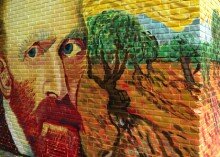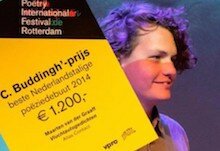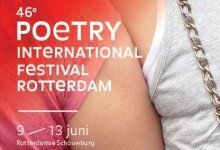The Poetics of Insularity
When we approach Andriana's poetry, we think above all of the experience of recognising a geographical area through the body of writing which she has developed with rare consistency over more than three decades. Her unremitting concentration on her island-page permits her to adjust her methods, but not change her subject. It is difficult to think of the experience of a poet among us which might be compared with Škunca's in terms of its single-mindedness. And the less promising the subject appears, the greater the effort dedicated to it by the poet, and the more successful she is in revealing the riches hidden beneath the barren surface. By reading the text of the island in this way she has been led from a horizontal representation of the visible to vertical representation of the invisible and to its archaeology, which can be apprehended by making use of a sense which differs from all the familiar senses, and of which the most that can be said is that it is an authentic poet’s sense.
In particular, Škunca's reading of the island of Pag is a hiker’s labour, overcoming the rocky and uneven surface of the island to inform the nature of a manuscript dogging the footsteps of a poet’s reading of the land, discovering its most demanding and steepest paths. The poet reduces the visible to its elements, discarding anything superfluous which would make a spatial arrangement appear familiar and already seen.
Just as Škunca's domain cannot be possessed by looking, but only be mastered on foot, so is her island of Pag illuminated, not in a way that ensures maximum visibility, but in a way that most clearly reveals its structure. The common image of the Mediterranean corresponds to the glare of a summer noon, as described by Valéry and Nazor*. Škunca does not follow the sun's passage through the year in its triumphant ascent, but in its descent, in the enfeebled power of the sun when “day by day / the sun’s gaze grows weaker”. She prefers to the shimmering form of a landscape in a mirror, the petrifaction of November, when life is extinguished and death approaches, lending everything a terminal clarity. The only thing which can challenge the unremitting clarity of November is the rain, which “slices the air/ with narrow bands”, obliterating the outlines of the visible. In erasing the differences between things, she connects things differently. The astonishing short poem, ‘Sheep’ owes its being to that linkage: “Fallen silent against the wall it makes another – a lower wall. Rain drizzles into its open eyes. It rinses the landscape.”
The sun is the principle of presence, a metaphor of an eye that sees the keenest. But its absence too, the absence of light, which is to say shadow, also aids visibility. In its origin, the shadow has another quality: it comes not only from the underworld, but from the unconscious as well. It proceeds from another visibility, the human psyche, as in the poem ‘Shadow’: “Farther away it gushes out of the underground stream, following us everywhere. Constantly tied to some suffering that resides in us – like a broken staff it leans on.”
On the few occasions when she does speak of the aura of summer, Škunca sees a shimmering geometry in contrast to the immobility and rigidity of her icy image of the world; “balls of rays, angles of light” which spread out to a “triangle of bare ground”. One sees how “sultriness remakes the hills: settles from one place into another.” Earth and sky are imperceptibly remade in succeeding phases of the translucent Cubism of Cézanne’s landscapes.
But daydreams of light never seem so intense as when they are consummated by the presence of the opposite element – darkness. The day is re-formed by wooden shutters so that the dark will not “whiten by the tyranny of pressure”. And, indeed, only those who live in the Mediterranean know that the greatest pleasure is to be drawn from sunlight when it is experienced through drawn blinds.
An island is a closed form. It is geographically circumscribed by its very nature, but it is also a place and a whole universe of places which have come into being in a pattern of reflexive action between the human and the chthonic [of the earth or underworld, ed.]. If one keeps in mind the chief characteristic of an island as a closed form, one particular poetics of insularity might be to investigate the fact that motion on an island is in thrall to a concentric or a centripetal model. If we follow the spatial bearing of this motion, then time becomes, if not cancelled out entirely, at least relative.
Deserted places are points of a negative topography, points in which contemporary life has been extinguished, but which do not cease to glow from the depths of time. Such a poetics would also presuppose a corresponding circumscription in the number of motifs: in an attempt to differentiate the simplest constituent parts of sublunary phenomena they would repeat, draw upon one another, displaying an austerity of choice by which everything might already be exhaustedly mined. Similarly, the illusion of closeness to some essential principle of space seems more present on an island that anywhere else.
By reading the text of the island and re-inscribing it, Andriana Škunca is attempting to exhaust the specific conditions of a given world, to establish its contours and perimeters through the written word. In so doing, the poet achieves an astonishing perception, that the reality of a given world is never sufficiently real unless confronted with its own unreal reflection. In other words, she perceives that reality and unreality are not mutually exclusive, and that their failure to contradict one another functions to construct a truth, which actually can be defined as a poet’s, and that we see nothing of the decorative in so naming it. This simply indicates the thoroughness with which her poems work at rendering their model of the world legible.
* Vladimir Nazor, 1876-1949, famous Croatian poet.








